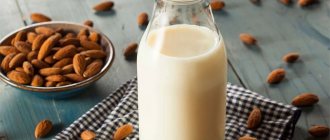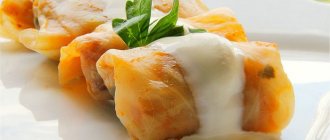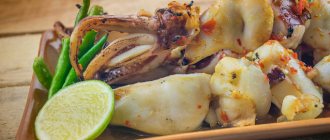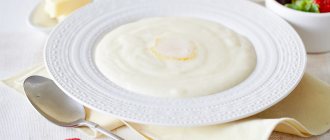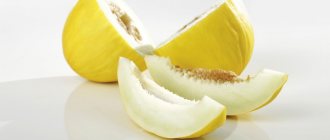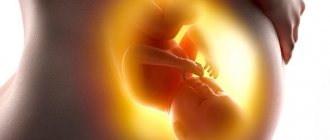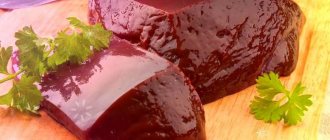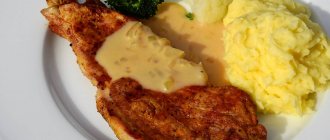What are the benefits of fish for breastfeeding?
Pediatricians and breastfeeding specialists agree: fish is good for breastfeeding. This is explained by the high content of valuable substances with easy digestibility of protein.
When breastfeeding, it is important for a woman to eat properly so that she has enough to produce milk. An infant has nowhere to get minerals, vitamins, proteins, and fats for growth except from the mother.
Therefore, the composition of breast milk is more or less constant and depends on the mother’s nutrition only in certain parameters. For example, in terms of the composition and amount of vitamins. Everything useful that the nurse did not eat will still end up in the milk, but from her body: the bones will “share” calcium and phosphorus, the muscles will share protein, etc. Therefore, nursing mothers need to make their diet rich and thoughtful. Then no one will be left out.
What is fish rich in, why should nursing mothers not exclude it from their diet:
- Mineral salts. Calcium, fluorine and phosphorus are useful for bone growth, magnesium and sulfur are useful for building nervous tissue, iron, iodine, etc. help proper hematopoiesis.
- Vitamins. Particularly rich in vitamins A, D and K, PP. But in the first place are B vitamins. They help the gastrointestinal tract of mother and child to work correctly, and the newborn especially needs this.
- Fish oil during breastfeeding is a rich source of fatty acids that control lipid metabolism, synthesize vitamin F, are responsible for the elasticity of blood vessels and protect against cancer. It can be taken both in natural form and in the form of dietary supplements in capsules.
- It is rich in enzymes that help digest food. And its protein contains all the essential amino acids, and it is absorbed by the body almost completely.
The best dishes with tuna during the GW period
In the first months of a child's life, fish should be steamed. This cooking method is harmless, so the resulting dietary dish can be consumed even if there are problems with the gastrointestinal tract.
Later, the diet can be diversified with tuna baked in foil, as well as fish cutlets or meatballs. It is not advisable to eat fried fish, as it is difficult to digest. In addition, when frying, the beneficial substances of tuna have time to be destroyed.
Is it possible to eat tuna during breastfeeding if it is part of sushi, sashimi or rolls? When preparing these oriental dishes, raw fish is used, processed only with spices, so helminths often remain in it. Through food, parasites can quickly penetrate the body of the mother and baby.
While breastfeeding, you should not eat smoked tuna, since the preparation uses a large number of preservatives that the child’s digestive system cannot cope with.
Tuna meat is a valuable and nutritious product. The diet of a nursing woman should include fish dishes, since with their help the mother and child receive the necessary minerals and trace elements.
And in addition to fish, you may well include meat in your diet, for example, turkey dishes while breastfeeding.
The best option for cooking tuna for a nursing mother is steamed
However, when including tuna on the menu, certain rules must be followed. The list of dishes is compiled based on the woman’s individual preferences, but the product must be heat-treated and consumed only in small portions.
Precautionary measures
Although fish is useful for a young mother, during breastfeeding it is worth adhering to a number of rules to protect yourself and the child:
- For a nursing mother, it is important where the fish lived. It is better if it is sea or oceanic, because the vitamin and mineral composition is richer than freshwater, and there is more valuable fat.
- If it is verified that the child is not allergic to different varieties, the mother can eat almost any. Although it happens that a baby has no reaction to an inhabitant of the seas that grew up in the wild, but it may appear to one that is artificially raised. As a rule, in such cases, an allergy occurs to dyes that are added to the food to brighten the color of the fillet. It is better to protect a newborn from these chemical additives.
- When breastfeeding, salt the fish well and cook longer to ensure that possible parasites are neutralized. You may not notice them and eat them. The least number of worms is found in sea water, and among freshwater, you should prefer river water. Fish that lived in stagnant water (pond, lake) are more infected.
What kind of fish can a nursing mother eat?
When breastfeeding, you have to weigh the pros and cons when choosing foods.
Permitted and prohibited varieties
While breastfeeding, you can and should eat different types of fish, but some of them come with reservations.
Red fish quite often ends up in markets and stores from farms. It has been proven that in terms of the content of useful substances, artificially grown individuals cannot compete with those caught in the open sea. If the product is not commercial, bypass it for now.
The river fish is quite suitable for a nursing mother, the same noble pike perch. But there are limitations here too. For example, bottom-dwelling catfish feed on carrion, everything that is on the bottom. Therefore, it is better to refrain from buying catfish during lactation.
Commercial salmon, chum salmon and other types of noble red fish (provided the child does not have an allergic reaction) are very useful to add to the diet. Especially if it was fished in cold waters: the content of healthy fats is an order of magnitude higher. You can detect artificial colors in farmed fish: they slightly color the water or oil in which the fish is cooked.
River trout with white tender meat is quite suitable for a nursing mother's menu. True, this freshwater species is readily bred by fish farms.
Varieties with low fat content - hake, pollock, cod - are suppliers of protein, and it is less likely to cause reactions in the baby and is digested by the body much easier and faster than animal meat. The baby grows very quickly and doubles its weight by six months, which means that there should be more protein in the mother’s diet than usual, otherwise the body will take it from the woman’s muscles. The low calorie content of these types of fish will help mom quickly return to her previous shape.
The champion in protein content is tuna. But hold off on it for now: it accumulates toxic mercury. The larger the individual, the more harm it causes. This also applies to tuna's relative, mackerel, although its fat is good for the heart and blood vessels.
Eating herring is good for you, everyone knows that. Due to the lack of heat treatment, valuable fats and fat-soluble vitamins are preserved as much as possible. It would seem that with such benefits, doctors should specifically prescribe herring during breastfeeding. But is this so clear during the Civil War?
Excess salt retains water in tissues. Although nursing mothers should drink more, fluid turnover is important in this process, not its retention in the cells. With excess salt, all liquids, including milk, become saltier. Not only is this level of salt harmful to an infant, it can also stagnate in the ducts.
Salted fish can also be dangerous due to parasites: helminth eggs die if the technological requirements for the duration of salting and the concentration of the solution are fully observed. But most people prefer lightly salted fish. This poses a potential danger of infection and subsequent intoxication. Therefore, despite all the benefits of herring, it is not recommended for a nursing mother to eat salted fish.
When choosing fish while breastfeeding, you should avoid those that have gone through the smoking apparatus. First, smoked fish is salted and then treated with smoke for a long time. It does not undergo heat treatment. Smoke contains combustion products that are far from healthy, some are carcinogenic. The carcass, like a sponge, absorbs them, so nutritionists do not recommend smoked meats to anyone, not just young mothers.
Canned
Canned fish made according to Soviet technological requirements should not contain any preservatives, except for a small amount of salt. Long-term storage is ensured by the very high processing temperature of the jars and strict compliance with the requirements for the preparation of raw materials. Nursing mothers can eat such fish without expecting a catch. This is if there is no doubt about the quality of the products of specific modern industries. True, canned food no longer contains as many vitamins, but fish is still rich in mineral salts and protein.
Fried fish is tasty, aromatic and very appetizing. True, the benefits are less than steamed or boiled. Fatty acids are destroyed at very high temperatures, and carcinogens are formed in the crust.
But if you don’t get carried away with the crust being too golden and alternate between different cooking methods, then why not.
As is the case with salted fish, it is better not to eat dried fish during breastfeeding. The reasons are the same: parasite eggs may be viable, excess salt makes it difficult for milk to leave the ducts. In addition, the benefits of such food are questionable.
How to cook fish for a nursing mother
Pediatricians advise to refrain from including fish in the menu of a nursing mother in the first month. This is a period when a woman carefully tries new foods for her baby, gradually expanding her diet. But with potential allergens (and fish is one of them), it is better to wait 1-2 months.
In the future, it is important to choose gentle cooking methods. For the first six months, avoid frying; this can undermine the normal functioning of your stomach and will bring minimal benefits. It is healthier to bake, steam or boil fish. By the way, broth made from bones, heads and fins contains more minerals than broth cooked from fish meat. Of course, not everyone is ready to eat boiled fish because of its specific smell. But when baked and properly seasoned, the fish will not only retain its vitamin and mineral wealth to the maximum, but will also surprise you with a pleasant taste and wonderful aroma.
Doctor Komarovsky's opinion:
— The main goal of all advice is to make the life of a nursing mother comfortable. Whatever you ate before pregnancy and childbirth, eat after. There are only two “buts” about fish. First, hold off on seafood to begin with, as these are strong allergens. Long-lived large fish such as tuna and swordfish accumulate mercury. You don't need this!
Cooking
Fresh fish for a nursing mother can be steamed or boiled. If the baby is more than six months old, tuna can be baked in foil or a bag. When purchasing, it is important to make sure that the product has been stored correctly (the fish must be frozen and not have a yellow coating). When defrosting, check the freshness and quality of the meat.
Canned tuna in its own juice and oil is widely available on sale. Can a nursing mother eat canned tuna? If the baby is less than a year old, it is advisable to avoid such a product, since it may contain preservatives and flavor enhancers that are harmful to the baby. In the future, when choosing between canned food in oil and its own juice, preference should be given to the second option, since it does not contain excess fat, and of unknown quality.
Useful properties and composition
It is important for a nursing mother to know what components fish consists of. The composition of the food product in question traditionally includes:
- proteins (up to 25% of the total number of nutrients);
- fats (up to 35%. Most of the fats that make up fish are unsaturated, which allows them to be easily absorbed and benefit the functioning of vital systems of the body);
- water (up to 90%).
What kind of fish can a nursing mother eat?
Fish is not on the list of prohibited foods when breastfeeding, with the exception of varieties with high mercury content [1].
Prohibited varieties of fish during breastfeeding
The US Food and Drug Administration recommends that pregnant women avoid eating several types of fish: sharks, swordfish, king mackerel and other large fish, which feed on small fish and are thus more likely to accumulate mercury. According to the FDA: "Although methylmercury is known to pose the greatest risk to the developing nervous system of the unborn child, it is prudent for nursing mothers and young children to avoid consuming such fish as well." [3]
A complete list of fish prohibited for consumption by the FDA [1], indicating the amount of mercury [2] (a value of 0.96-1.45 PPM is considered dangerous) is presented in Table 1.
Table 1 – Types of fish with high mercury content
How can mercury affect breastfeeding mothers and children?
According to the CDC, mercury can be passed from mother to baby through the placenta during pregnancy and, in smaller amounts, through breast milk after birth. Exposure to mercury can affect the development of a baby's brain and nervous system during pregnancy and after birth. [4]
In another study [5], the American Academy of Pediatrics concluded that “the possible risks of excess mercury or other contaminants are offset by the neurobehavioral benefits of adequate DHA intake” [6].
A mother's diet appears to be the main source of mercury in breast milk, with studies showing higher levels in the breast milk of mothers who eat large amounts of fish. [7]
How to introduce into the diet: quantity and order
Fish is an excellent source of protein, vitamins and minerals for a nursing woman. The Center for Disease Control and Prevention recommends the following diet for breastfeeding [4]:
- Eat 2-3 servings of fish per week from the "Best Choice" list or 1 serving from the "Good Choice" list [1] .
- Eat a variety of fish.
- Serve children 1-2 servings of fish per week, starting at age 2.
- If you eat fish caught by family or friends, check the fish recommendations. Unless advised, eat only one serving and no other fish that week.
There are currently no specific recommendations regarding the amount or frequency of fish consumption by infants (whether breastfed or not) under 2 years of age.
You should start with a piece of fish weighing no more than 50-100 g. After making sure that there is no reaction from the baby, which is traditionally expressed in the appearance of rashes, stool disturbances, excessive gas formation or bloating, you can increase the portion to the desired size, while carefully monitoring the quality of the product and how it is prepared. preparations used in the menu during lactation.
How much and how to eat
Tuna is suitable for consumption in any form . No parasites have been found in this fish, and its raw meat is traditionally used in Japan to make sushi.
We are more familiar with dishes in which the fish undergoes preliminary heat treatment. Tuna can be boiled, fried, baked, canned food is used to make salads.
The daily intake of fish for adults is about 50 g per day, but not more than 360 g per week. Nutritionists recommend serving it at least twice a week, for older people - up to 4 times.
Tuna is a dietary product ; it is included in therapeutic and preventive diets recommended for cardiovascular and some other diseases.
This is an ideal product for sports nutrition and body weight correction.
The almost complete absence of carbohydrates means that it can be safely included in the diet of people with diabetes .
If you don’t yet know how sea kale is beneficial for the body, read our publication!
Is it possible to include catfish in the menu while breastfeeding? Find the answer to the question in this article.
This material will tell you how to determine the quality of red caviar when purchasing. Find out more!
Types of fish: what are they?
River fish
The most popular varieties of river fish included in the diet of nursing mothers are pike, trout, pike perch, carp, and crucian carp.
Table 1 – Varieties of river fish and their effect on the body
Sea fish
Among the sea fish recommended for consumption by a nursing mother, the most common are cod, pollock, halibut, and mackerel.
Table 2 – Varieties of sea fish and their effect on the body
Smoked fish
Smoked fish is most often not recommended for consumption by nursing mothers under the following pretext:
- high use of salt (suppresses lactation);
- lack of heat treatment (danger of contracting an infection for the mother and her baby);
- the likelihood of using chemical “liquid smoke” in industrial fish production;
- Highly allergenic varieties are often used, which can provoke numerous rashes on the baby’s skin, as well as problems with the functioning of the children’s gastrointestinal tract.
Firstly, if you prepared smoked fish yourself, there is no need to worry about possible harm to the child’s health. Secondly, there have been no clinical studies proving at least one of the disadvantages mentioned above.
red fish
Red fish includes the highest quality and most expensive varieties: the salmon family (salmon, trout, sockeye salmon, pink salmon), sturgeon family (sturgeon, sterlet, beluga) and white salmon family (taimen, coho salmon, white fish). Despite the high fat content in red fish, it is most often recommended by doctors for use as food for women during pregnancy and lactation. This is due to the beneficial effect on the nervous, skeletal and immune system of a breastfeeding baby, whose mother’s diet regularly includes the varieties of product in question.
Microelements that contribute to a positive effect on a child’s health include:
Red varieties of fish do not affect lactation. It will be useful for a nursing mother to include the product in question in her diet at least 2 times a week.
Salty fish
Salted fish is not recommended for consumption during breastfeeding due to the risk of causing milk stagnation, which is formed due to excess salt in the thoracic ducts. In addition to the negative impact on the child, excessive consumption of salted fish is also fraught with danger for the woman herself during the lactation period:
- deterioration of the cardiovascular system;
- increased blood pressure;
- the occurrence of internal edema.
However, these properties of salty foods have not been confirmed by clinical trials (especially when consumed in moderation). This also applies to dried and dried fish.
Fried fish
Fried fish, if prepared without the use of vegetable oil (or with a small amount), can only have a positive effect for the mother and her baby during breastfeeding. With this type of heat treatment lasting less than 15 minutes, it is possible to preserve the vitamins and nutrients contained in the product. The intake of vitamins B, A, D into the body guarantees not only the timely development of the child, but also the restoration of the hormonal balance of a nursing woman in the postpartum period.
Even if you eat fried fish every day, your lactation will remain unchanged. It is only important to monitor the possible occurrence of an allergic reaction of the baby to the introduction of a new product and not to use a large amount of spices and vegetable oil in its preparation.
How to introduce it into the diet
Fish must be included in the diet of nursing mothers, but at the first tests, monitor the baby’s condition to see if he has an allergic reaction to this product. If this happens, then it is excluded (the same applies to other potentially dangerous food products)
If a woman ate fish dishes during pregnancy, then after giving birth you can continue to eat such dishes. With the condition that she did not have any food allergies to representatives of the sea. But even if the mother did not consume it during pregnancy, you can eat it, carefully introducing it into the diet in small portions, carefully monitoring the baby’s well-being. Only an observing doctor can prescribe a complete cessation of use if allergic reactions are present in the child.
The specialist will recommend varieties of fish, acceptable methods of heat treatment: steaming, stewing, etc. You should also take into account that during lactation, the nursing woman’s energy consumption increases by 700 kcal per day. Therefore, you need to correctly structure your diet to cover the energy needs of the body.
It is recommended that nursing mothers take an additional 300 mg of Omega-3 daily. Regular consumption of boiled, steamed or stewed fish products 1-2 times a week completely replaces this need.
It is important to remember that it is the red varieties that most often cause allergies. It is them that should be abandoned for a short period of feeding. If the mother did not eat fish dishes while expecting the baby, then the baby’s fragile body may show a negative reaction.
We also recommend that you read the article where we talk about the use of currants during breastfeeding, as well as coffee - one of humanity’s favorite drinks.
How to choose quality fish
In addition to a responsible approach to determining the permitted varieties of fish during lactation, it is advisable for a woman to be guided by the basic rules of her choice when purchasing in a store:
- Make sure there is no unpleasant odor or visible damage on the carcass.
- Check that the animal's eyes are bulging and clear, and that the gills are clean and bright pink.
- By pressing on the fish, make sure that there is no pit on the carcass, which usually indicates the beginning of the internal decomposition process.
- When choosing frozen fish, it is worth checking that the layer of ice on it is minimal and uniform, without excessive snow in the package.
- High-quality red fish will definitely have pale pink veins, visible to the naked eye.
Summarizing the above, it becomes obvious that fish significantly helps not only in maintaining the correct formation of the body of a child fed with breast milk, but also in restoring the weakened health of a nursing woman after pregnancy and childbirth. However, in order not to harm either herself or her baby, the mother must carefully select foods to eat.

